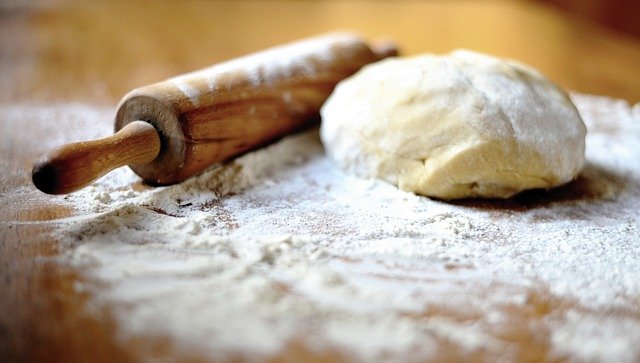Let’s discuss one of the most important factors you should consider when baking: the flour’s strength, a.k.a. the W-index. First nerdy clarification, the W-index is wrongly considered the strength of the flour as it is actually a measure of energy: the energy necessary to inflate a bubble of dough. Yes, a bubble. We need to take a step back and introduce the Chopin alveograph.
The Chopin alveograph
In 1921, Marcel Chopin invented a device to test the mechanical properties of flour, the extensimeter or alveograph. Flour is kneaded with water and salt to produce a dough and then a piece of the dough is inflated to form a bubble. The bubble is extended until it burst. There are 4 parameters that can be measured with this test:
P-index: the tenacity of the flour.
L-index: the elasticity of the flour.
G-index: the capacity of the bubble to bulge until it breaks, indicates the rising yield for the flour.
W-index: the energy necessary to inflate the bubble of dough.
W-index
Flours with a higher W-index are so called stronger because characterized by higher content of the proteins (gliadin and glutenin) that form gluten when in contact with water. That means that with high W-index flours you can increase the hydration of your baking products, because your flour can take all that water and in fact make gluten. Flours can be grouped based on their W-index as follows:
- Very weak flours: W<90, not suited for baking
- Weak flours: 90-160, with low rising capacity ideal for cookies, crackers, breadsticks, etc.
- Intermediate flours: 160-250, suited for short fermentations like focaccia or pizza
- Strong flours: 250-310, a safe range to make several preparations as bread, croissants, more pizza and focaccia
- Very strong flours: 310-370, for long fermentation and rich baking products as panettone, pandoro, colombe.
Special mention for the Manitoba flour. Originally from Canada and now produced also in Europe, this flour has a W-index above 400. It can be mixed with weaker flours to increase the strength or I have used it to make panettone.
Look at the proteins
In the United States, this index is very rarely reported by flour manufacturers but you can have an idea of the flour strenght by looking at the protein content. Careful though! Whole wheat flour is rich in proteins but not the ones that transform into gluten. In fact, whole wheat flour is milled with the bran and germ, thus containing a lot of flavorful proteins but it won’t endure long fermentations. So, you can only use this trick with white flour. White flours with 12.5-14% protein are strong to very strong flours and can be used for bread and longer fermentations. A flour with 9% is the one you should use for cookies and breadsticks.
Choosing the right flour for your baking project is crucial! Hydration and fermentation heavily depend on it.
References:
- Bennett & Coppock “Measuring the physical characteristics of flour : A method of using the chopin alveograph to detect the effect of flour improvers” (1952) https://doi.org/10.1002/jsfa.2740030702
- Bettge et al. “Alveograph algorithms to predict functional properties of wheat in bread and cookie baking” Cereal Chem (1989)

